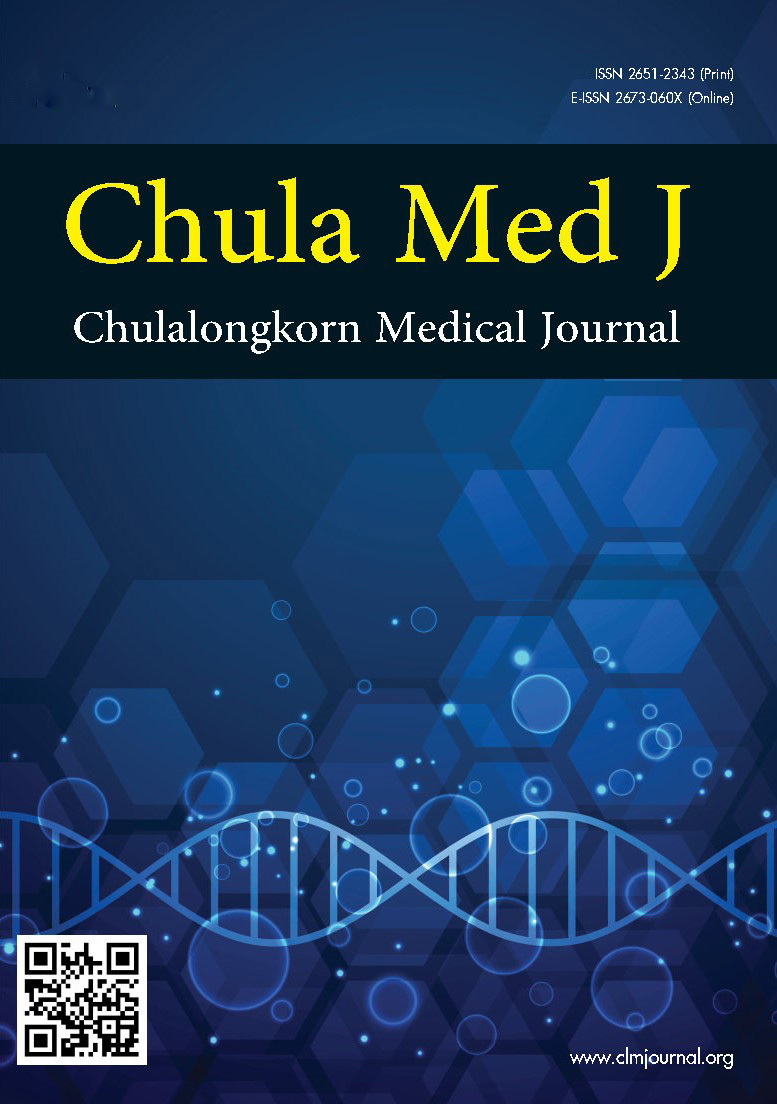Quality control of clinical protocols using the CT accreditation phantom
Keywords:
ACR CT accreditation phantom, annual quality control, contrast-noise ratio, low-contrast performance, quality control of clinical protocolsAbstract
Background: The daily quality control of the computed tomography (CT) system consists of measuring the accuracy of the CT number and artifact evaluation. The annual quality control includes a clinical protocol review. The quality assurance requirements are the responsibility of the CT radiologist, whereas the clinical team reviews and manages the CT protocol to deliver the appropriate radiation dose to the patient for each examination.
Objectives: This study aimed to examine CT number accuracy, review clinical protocols, and verify that the low-contrast performance of clinical protocols was adequate for diagnosis.
Methods: The American College of Radiology (ACR) CT accreditation phantom (CTAP) was scanned by five CT systems with four clinical protocols. The acquisition parameters for the four clinical protocols of each CT manufacturer were set according to the ACR CTAP standard criteria. The CT number calibration was performed, and the low contrast performance in terms of the contrast-to-noise ratio (CNR) was quantitatively evaluated.
Results: The mean CT numbers of polyethylene, acrylic, water, bone, and air were –96, 125, 0, 919, and –993 Hounsfield Unit (HU), respectively. The CNR of the adult brain protocol from the five CT systems was 1.6, 1.8, 1.9, 2.5, and 2.2, and the pediatric brain protocol was 1.5, 1.1, 1.1, 1.1, and 2.0, respectively. The CNR of the adult abdomen protocol was 1.1, 1.1, 1.1, 1.3, and 1.0, and the pediatric abdomen protocol was 0.5, 0.5, 0.5, 1.1, and 0.4, respectively.
Conclusion: The CT numbers in HU were within the calibration criteria for polyethylene (–107 to –84), acrylic (110 to 135), water (–7 to 7), bone (850 to 970), and air (–1005 to –970). The CNR of four clinical protocols were within the ACR Guidelines of the adult head >1.0, pediatric head >0.7, adult abdomen >1.0, and pediatric abdomen >0.4.
Downloads
References
American college of radiology. Computed tomography quality control manual. Reaston VA: ACR; 2017.
Mahesh M. Medical radiation exposure with focus on CT. Rev Environ Health 2010;25:69-74.
https://doi.org/10.1515/REVEH.2010.25.1.69
Samei E, Bakalyar D, Boedeker KL, Brady S, Fan J, Leng S, et al. Performance evaluation of computed tomography systems: summary of AAPM task group 233. Med Phys 2019;46:e735-56.
https://doi.org/10.1002/mp.13763
Roa AM, Andersen HK, Martinsen AC. CT image quality over time: comparison of image quality for six different CT scanners over a six-year period. J Appl Clin Med Phys 2015 ;16:4972.
https://doi.org/10.1120/jacmp.v16i2.4972
Cody DD, Fisher TS, Gress DA, Layman RR Jr, McNittGray MF, Pizzutiello RJ Jr, et al. AAPM medical physics practice guideline 1.a: CT protocol management and review practice guideline. J Appl Clin Med Phys 2013;14:3-12.
https://doi.org/10.1120/jacmp.v14i5.4462
McCollough CH, Bruesewitz MR, McNitt-Gray MF, Bush K, Ruckdeschel T, Payne JT, et al. The phantom portion of the American college of radiology (ACR) computed tomography (CT) accreditation program. Practical tips, artifacts, examples, and pitfalls to avoid. Med Phys 2004;31:2423-42.
https://doi.org/10.1118/1.1769632
Hobson MA, Soisson ET, Davis SD, Parker W. Using the ACR CT accreditation phantom for routine image quality assurance on both CT and CBCT imaging systems in a radiotherapy environment. J Appl Clin Med Phys 2014;15:4835.
https://doi.org/10.1120/jacmp.v15i4.4835
Kofler JM, Yu L, Leng S, Zhang Y, Li Z, Carter RE, McCollough CH. Assessment of low-contrast resolution for the American college of radiology computed tomographic accreditation program: What is the impact of iterative reconstruction? J Comput Assist Tomogr 2015;39:619-23.
https://doi.org/10.1097/RCT.0000000000000245
American college of radiology. Quality control manual computed tomography. In: American college of radiology. Computed tomography quality control manual. Reaston VA: ACR; 2017. p.69-70.
Smith-Bindman R, Moghadassi M, Wilson N, Nelson TR, Boone JM, Cagnon CH, et al. Radiation doses in consecutive CT examinations from five University of California Medical Centers. Radiology 2015;277: 134-41.
https://doi.org/10.1148/radiol.2015142728
Solomon J, Marin D, Roy Choudhury K, Patel B, Samei E. Effect of radiation dose reduction and reconstruction algorithm on image noise, contrast, resolution, and detectability of subtle hypo attenuating liver lesions at multi-detector CT. Radiol 2017;284:777-87.
https://doi.org/10.1148/radiol.2017161736
Joemai RM, Veldkamp WJ, Kroft LJ, Hernandez-Giron I, Geleijns J. Adaptive iterative dose reduction 3D versus filtered back projection in CT: evaluation of image quality. AJR Am J Roentgenol 2013;201:1291-7.
https://doi.org/10.2214/AJR.12.9780
Schindera ST, Odedra D, Raza SA, Kim TK, Jang HJ, Szucs-Farkas Z, et al. Iterative reconstruction algorithm for CT: can radiation dose be decreased while lowcontrast detectability is preserved? Radiology 2013;269:511-8.
https://doi.org/10.1148/radiol.13122349
Mansour Z, Mokhtar A, Sarhan A, Ahmed MT, ElDiasty T. Quality control of CT image using American college of radiology (ACR) phantom. Egypt J Radiol Nucl Med 2016;47:1665-71
Downloads
Published
How to Cite
Issue
Section
License
Copyright (c) 2025 Chulalongkorn Medical Journal

This work is licensed under a Creative Commons Attribution-NonCommercial-NoDerivatives 4.0 International License.







